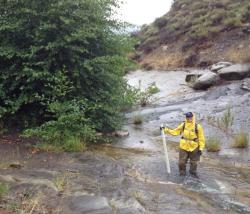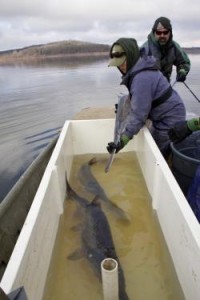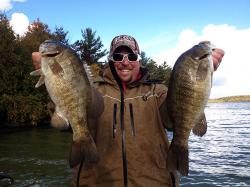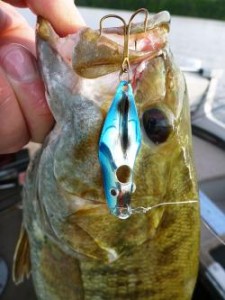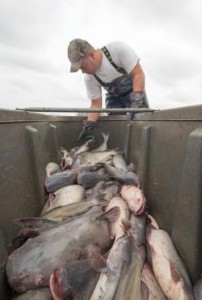Veterans Conservation Corps Expands Again — Vets Learn Fisheries, Conservation Skills in California
from The Fishing Wire
The Veterans Fisheries Corps Program is growing again! As the program that trains veterans in fisheries restoration expands toward covering coastal watersheds state-wide in California, its next permanent home and launching pad will be the California Conservation Corps center in Ukiah, California. Here veterans will assist biologists with monitoring salmon and steelhead that span Mendocino County and the Russian River Watershed.
Veterans perform snorkel surveys to count juvenile salmon and nests of salmon eggs, known as redds, throughout the year. In this photo, the snorkel team surfaced under a patch of lily pads. Photo: California Conservation CorpsVeterans who participate in this program develop lasting skills and expertise in fisheries research and restoration to support recovery of endangered steelhead and salmon in California. Since the program started in 2012, it has expanded twice and can now support up to 10 veterans each year. Many veterans have found employment after the program and several have secured jobs in a natural resource field. Some veterans plan to seek a degree in a natural resource field. Veterans are eligible for college tuition after completing the program with an additional Americorps Education Award.
The work the veterans perform in the Corps is in high demand. To many of NOAA’s partners that implement habitat restoration in California, veterans fill critical gaps to make these projects successful. “I have resource managers calling me to ask about getting someone from the Veteran Corps program to help them with their restoration projects. The word about this program is spreading and we are constantly trying to meet the current demand with new candidates,” states Stacie Smith, a NOAA Marine Habitat Specialist.
A veteran conducting a habitat typing survey in North Fork Matilija Creek, in the Ventura River watershed. Photo: California Conservation CorpsThe list of skills that veterans gain on the job is impressive, as are the statistics on work they have done to support habitat and the recovery of fish species. Veterans collectively have surveyed over 1,700 stream miles to monitor adult and juvenile endangered salmon and steelhead. They have supported more than 66 habitat restoration projects in various capacities including monitoring fish populations, restoring stream banks, measuring stream flows, removing fish barriers, and educating the public about habitat restoration.
Specifically in Ukiah, veterans will support efforts to track populations of salmon and steelhead along key freshwater streams. From October to March, they will survey the number of spawning adults migrating upstream. Then in the spring, veterans will learn fish trapping techniques to monitor young fish, called smolts, as they migrate downstream and into the ocean. This tracking helps NOAA understand population trends for key watersheds and provides a measure for these areas to gauge how our restoration efforts are contributing to the species’ recovery.
“We are so lucky to have these people who have served our country abroad and continue to serve our country by rebuilding our fisheries,” said Bob Pagluico, a NOAA Marine Habitat Specialist and one of the Veterans Corps Program founders. “To reach our goal of placing veterans in all of California’s coastal watersheds we need to secure ongoing funding. Every chance we get we are reaching out to private, government, and local sources for funding. We are very passionate about this program and how it has helped veterans who are looking to take the next step in their lives.”
Veterans in Ukiah will undergo extensive training and are expected to support restoration programs on-the-ground in October 2015. NOAA Fisheries welcomes this new group of veterans and appreciates their support for recovery of fish populations that are identified as a national priority for NOAA.
Watch for updates about the veterans and their stories on the NOAA Fisheries West Coast Facebook page.
Learn More, or contact Bob Paglucio in NOAA Fisheries’ Arcata office at 707-825-5166 if you are interested in applying for this program.

